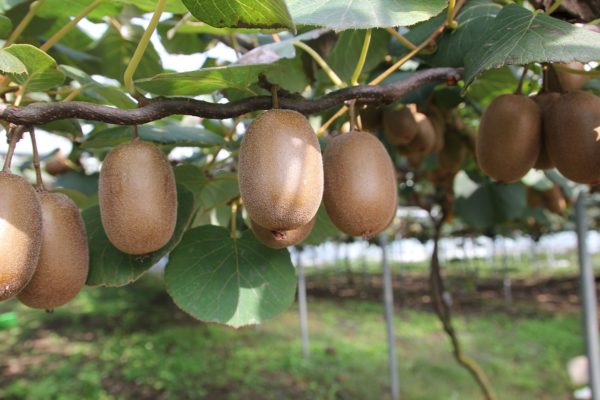** Guest Post **
Why and How Should I Grow Kiwi Plants in My Garden?

If three apples a day have not been able to keep the doctor away from you, one kiwi fruit definitely can! There are many instances in which the kiwi’s nutritional value has preceded many other fruits. Besides containing sufficient amounts of vitamins A, C and E, kiwis are also loaded with protective phytochemicals and nutrients, such as potassium and lutein. Potassium is an excellent antioxidant responsible for controlling blood pressure levels and improving the functions of the heart and kidneys. Lutein helps in protecting the cells against all passable oxidative damages and risks of chronic diseases. It also ensures a steady flow of blood, hence preventing clogged arteries and atherosclerosis.
This fact was revealed by a research presented at the American Heart Association’s annual meeting by Dr. Mette Svendsen, a registered dietician at Oslo University Hospital. Additionally, Kiwi plants fruit in the late autumn when other fruits are scarce. The plant can grow as big as 30 feet, so learning how to train and prune it is important. Here are some tips on how to grow kiwi plants:
Cultivation
Kiwis grow well in fertile, moist soil in a sheltered and sunny position. If you live in an area that has moderate winter and a frost-free season long enough for the fruit to mature, you can have as many kiwi plants as possible in your garden. However, if you’re in a hot region, grow Kiwi plants in an area that is protected during the hottest part of the day.
Planting
Plant your cuttings from autumn to late winter or buy potted seedlings from a reputable nursery. Again, Kiwi plants require a lot of room. In fact, some vines are capable of spreading up to 20 feet. Therefore, make sure you put them about 12 to 18 feet apart.
Training
The best way to grow Kiwi plants is by using a fence to train them. You’ll also need to provide a strong trellis, pergola or other strong support for the vines to climb over. Here are some steps to follow:
-:After planting your vine, place a thin stake near its centre
-:Attach the stake to the wires to support the leading shoot.
-:In order to have a vertical shoot, tie the main shoot to the stake.
-:Use horizontal wires to train each pair of the side shoots
-:Pinch out the tips of the side shoots when they’ve grown to about 50cm. These should fruit the following season.
Pruning
Kiwi vine can do grow extremely well if the right conditions are provided. The long, twisting canes can attain a thickness of 1 inch in just one season and can become thickly intertwined. During cold seasons, when the plants aren’t flowering nor fruiting, you’ll need to prune them back to a single branch along each trellis wire. Prune the fruiting laterals to about three buds beyond where the last fruit was borne. During summer, you’ll need to prune the side shoots to five leaves beyond the maturing fruit. The three-year fruiting laterals should be trimmed to a dormant bud near the horizontal arms.
Male to Female Ratio
Kiwi vines aren’t self-reproducing, so your garden must contain both male and female plants. However, a single male is capable of pollinating up to 8 females with no trouble. Buying potted plants from a reputable nursery will help you have a good combination of male and female vines. How do I differentiate between male and female seedlings? Well, many Kiwi seedlings are tagged in a nursery. Examples of male Kiwi vines are ‘Chico Male’, ‘Tomori’, and ‘Mateua’ while examples of female vines are ‘Hayward’, ‘Bruno’, ‘Vincent’, ‘Monty’ and ‘Abbot’.
Watering and Mulching
You must ensure that your plants receive sufficient amount of water and organic fertiliser high in nitrogen. After transplanting, water your seedlings daily until they’re settled. After that, you can slack off a little, as Kiwi plants prefer well-drained soil. Mulching around new transplants is also crucial because it helps preserve soil moisture and prevent frost damage to any new transplant.
Fruiting
Kiwi plants flower from late spring to early summer, depending on the plant variety you’ve chosen. They have wide, whitish petals, with male flowers also sporting gold stamens. The fruit, whose size and shape is also determined by the cultivar you’re growing, follows in the late summer through autumn.
Harvesting
Harvest the Kiwi fruits once they’re soft and firm. They can be stored in a refrigerator for about 6 weeks.

